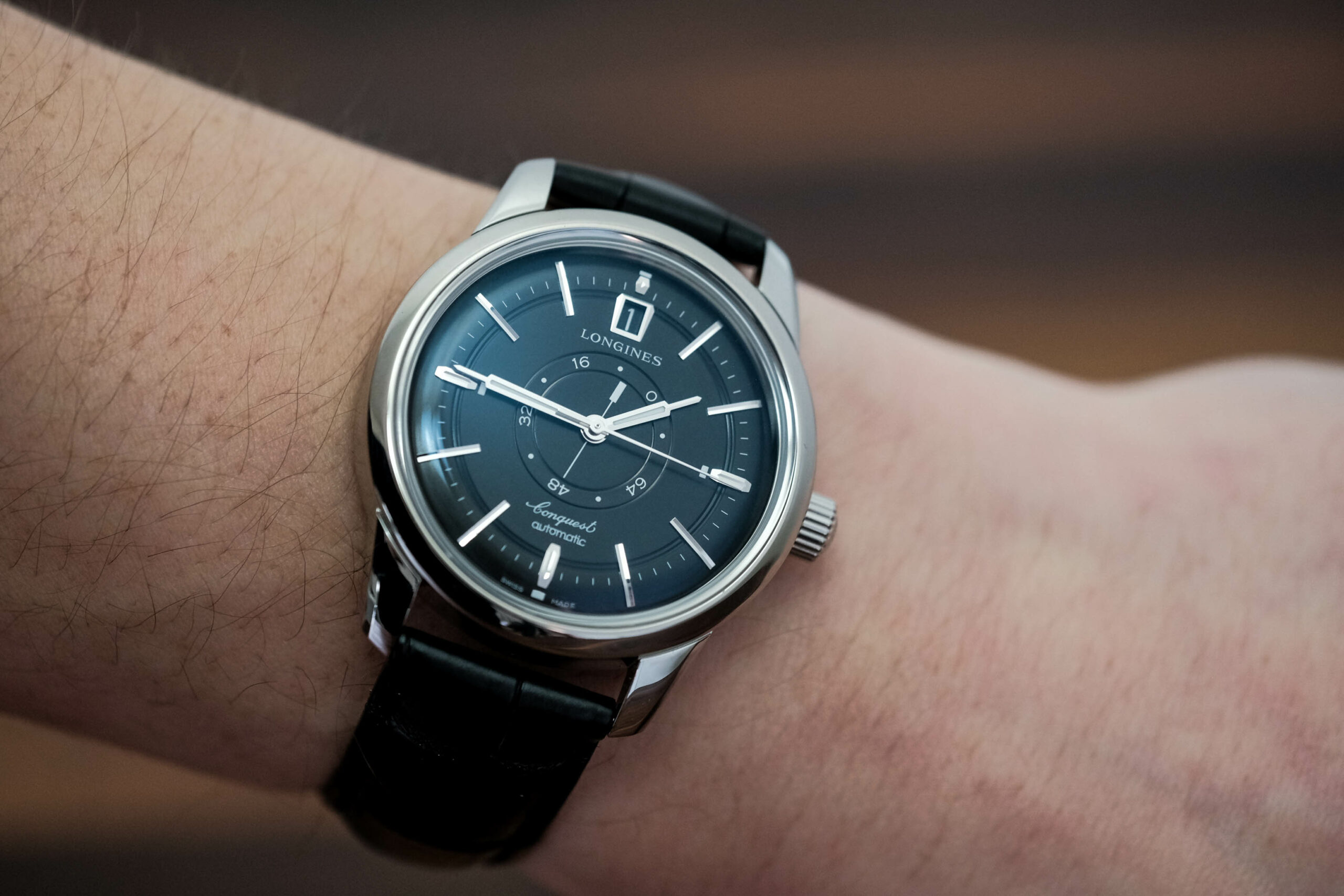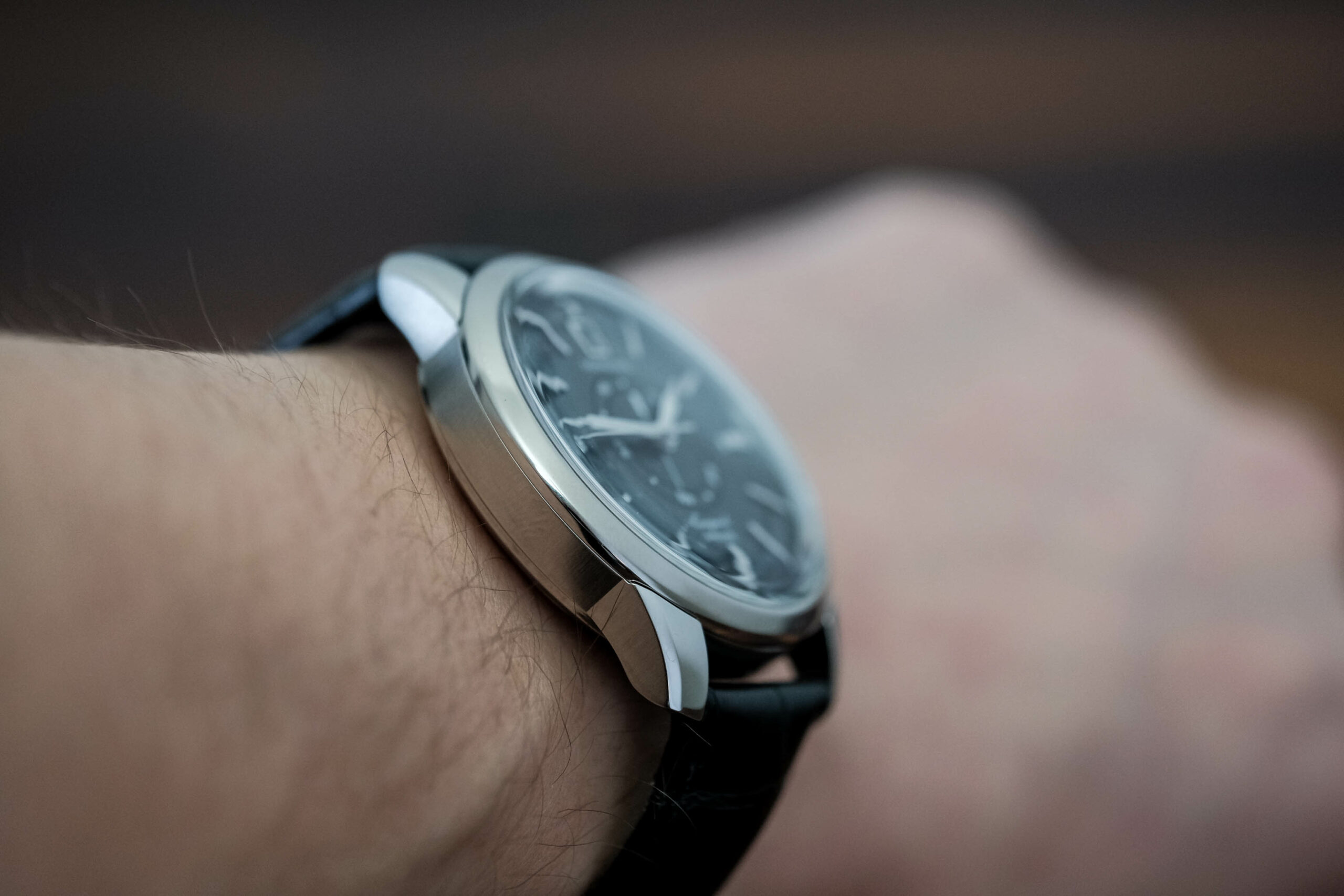
It’s finally Friday and I’ve decided to sit back and tell you all about my experience with the new Longines Conquest Heritage Central Power Reserve after spending two weeks with it on and off wrist. In my experience, Longines is a brand that has the capability of executing a watch design to perfection, but they also have the occasional case of a big swing and miss such was the situation with their oversized Conquest Chronograph that we reviewed.
I’ll start this review by saying that the Heritage Central Power Reserve is in their nearly perfect category of designs, along the same rank as their loved Heritage Sector Dial. Both of these watches have a few things in common, first and foremost their sizing and design proportions are excellent, sporting small slender cases and short lugs. They also both carry an interesting historical background from Longine’s vast vintage repertoire, and their dials are stunningly well executed and interesting – with the sector dial having of course a sector design and the central power reserve feature on the watch we’re looking at today is also just as rare.
Unique Function

Lets dig into the details starting with the star of the show, which is the central power reserve indicator, you guessed it – right in the center of the dial. A power reserve indicator is an unusual function to implement on a watch, it takes up lots of dial room and serves only one function, to display how much power is left in the movement – which is sometimes lauded as a useless feature by dedicated collectors and enthusiasts. I personally believe it’s one of the coolest features found on mechanical watches as it’s really a vintage type of feature, and makes the watch feel authentically retro.

Another neat aspect about power reserve indicators is the variety of ways a creative watchmaker can display this function. It can be classy and discreet as is the case with this Longines we have here, or it can be quirky, bright, and weird just like on the Nomos Metro Date Power Reserve. It’s really up to the brand and watchmaker to decide which way they want to take the look, and often it will depend on whether the watch is suppose to mimic a reissue or if it can be totally unique.
The way that Longines has gone about designing this specific power reserve function is very on-brand for them. It’s classy with its sub-dial like style and it’s not overly apparent what it may be on first glance, and you might only really understand how it works once you actually wind the watch. At first glance it looks as though there’s a needle like indicator hand that moves while winding the crown, but this hand is applied to a disk that slowly moves as the power depletes from the reserve. The section that moves when winding the watch is the repressed sub-dial like circle around it, with the hour markings etched with Arabic numerals. It’s a little odd to describe in writing, but I’m hoping to get a video up for you guys to demonstrate this in action.
Dial Layout

The dial layout really revolves around the main focus of the central power reserve function. Beyond that the rest of the dial is classic Heritage Longines, with long slender applied baton indices and the branded Conquest font in their trademark cursive font at 6 o’clock.
Another neat little design aspect is the placement of the date window at 12 o’clock, a location that is frequently used for watches that have other display functions happening on the dial such as the case with this watch.
Upon closer inspection, the dial also has a stepped effect starting on the very outer edge of the dial that emulates the moving ring around the central power reserve indicator. This is a very well thought out design aspect to pull the dial together congruently with the sole purpose of aesthetics in mind. Overall this is a very simple but well executed dial that exudes class and elegance from the past.
Size and Fit

Moving on to the size and fit of the watch, again this point has been aced again by Longines. The offical sizing comes in with a 38mm case size and a thickness of 12.30mm. In reality, when on wrist I’d say it’s spot on. The uncluttered dial allows the watch to have a touch more presence than say a dive watch at 38mm, this is a really perfect size for this type of watch for any wrist under 7.5 inches.

If I were to nitpick I would have loved to have seen a thinner case on this watch, but of course Longines is unable to do this due to their dedicated use of ETA movements which are inherently thick. If we were to ask Longines to stop using ETA and to make something thinner, perhaps in-house produced, then you can also expect a nice bump up in retail price.

The movement in use here is the Caliber L896, it’s self winding which you can gather by the rotor viewable through the exhibition caseback. The movement has 72 hours of power reserve and beats at 25’200 vibrations per hour. A neat feature of this movement is the use of a monocrystalline silicon balance spring.
Final Thoughts
With my only gripe being the thickness of the watch, which is a minute issue – I believe Longines aced this release. The watch fits perfect on wrist, and it’s designed with a rare function that that has further been implemented in a very unique way.
There’s not much to report on in terms of the quality build of the watch, which remains what you’d expect from Longines. It’s very well polished and finished with care, the Heritage Central Power reserve would make a really neat addition to a personal collection that’s lacking any fun old-school functions.
For more information visit the official Longines website here.
Leave a Reply